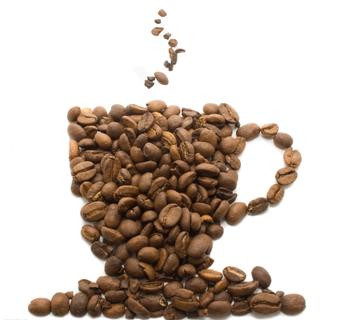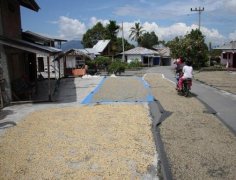Laos quality Coffee Plantation DAO HEUANG
Laos, whose full name is Laos people's Democratic Republic, is a landlocked country on Indo-China Peninsula and one of the only two socialist countries in Southeast Asia, the other being Vietnam. Vientiane, the capital, is a member of the Association of Southeast Asian Nations. Laos is mostly mountainous and plateau, with high terrain in the north and low in the south. Shangliao is the highest, known as the roof of Indochina. The Sichuan-Kuomintang plateau is known as the "roof ridge of Liao country." the Pubiya Mountains to the south of the plateau are 2820 meters above sea level, which is the highest peak in the country. The Mekong River is the largest river in the country, with a tropical and subtropical monsoon climate, with distinct drought and rainy seasons throughout the year.

The good natural advantage meets the growth requirements of growing coffee at high altitude, room temperature, sufficient humidity and drainage. At the beginning of the 20th century, the French were the first to plant coffee trees in the volcanic soil of Laos. French missionaries introduced coffee trees to Laos in 1930. Unlike other coffee beans in Southeast Asia, it is the only deep inland volcanic plateau that does not rely on the sea. The special geographical environment is natural. After the fruit turns red, delicate harvest time planning and strict natural sun control are artificially picked, and the special volcanic geology and climate of Laos create an excellent flavor of coffee with mellow and rich original flavor.
Bolovens Plateau is located in the Paksong high-altitude volcanic area of Champasak province, with an elevation of more than 1250 meters and between 14-16 degrees north latitude, excellent microclimate, proper distribution of rainfall, and a temperature difference of about 10 ℃ in the morning and evening. It is also the only volcanic ash geological plateau in Laos. Because the climate and growth latitude are suitable. The territory is also a volcanic rock geology. So the quality of coffee grown in slightly acidic soil can be said to be the most representative of the local high-quality coffee beans. With a mild climate, evenly distributed rainfall and plenty of sunshine, more than 6, 000 tons of arabica and Robusta coffee beans are produced each year.
DAO HEUANG and sinouk, two coffee plantations with the best local coffee quality in Laos, are located in the pozzolanic Pyrofen Plateau. Since 1927, 90% of Boloven volcano plateau coffee boutique beans have been exported to the control of French businessmen to the European market for nearly a hundred years. Today, DAO and sinouk coffee beans are popular in Europe, Japan, Taiwan and other places, and are loved by local people.
Boonlap Nhouyvanisvong, president of Laos Coffee Export Association, said: "High-quality beans are marketed in more than 20 countries, and Western Europe and Japan are the largest buyers. Laos coffee is becoming more and more popular in the world, and more and more companies are talking to us about imports. The special volcanic geology and climate of Laos make coffee with excellent flavor. "
Tasting experts commented on Laos coffee: "the aroma is complex and full-bodied, with the earthy taste of Mantenin, hardly sour and bitter, and different from poor-quality Vietnamese coffee." According to data from the French Centre for International Cooperation in Agricultural Research (CIRAD) in 2002, Laos coffee beans are one of the 12 best coffee beans in the world.
Laos coffee does not use pesticides and chemical fertilizers, farmers fertilize with buffalo droppings, is a real organic coffee, in line with environmental standards.
When it comes to how Laos coffee is different from other coffee, most people may say that it has a balanced taste and a mellow smell, but in a simple word, the local coffee shop in Laos is that "the brewed coffee is very black."
Important Notice :
前街咖啡 FrontStreet Coffee has moved to new addredd:
FrontStreet Coffee Address: 315,Donghua East Road,GuangZhou
Tel:020 38364473
- Prev

Coffee Bean Manor Rasuna Wahana Manor in Sumatra, Indonesia
Country: Indonesia Indonesia production area: Sumatra Sumatra Manor: Vahana Wahana species: Rasuna La Souna production area altitude: 1200 meters shade: 100% shade growth coffee beans treatment: sun Mantenin coffee beans characteristics: citrus, chocolate, cream aroma, round taste will give you the best, break your
- Next

KOUANDJI Manor, a coffee producing area in New Caledonia.
New Caledonia in Melanesia is an oasis in the South Pacific. It is a prosperous, beautiful and magnificent land. Whether it's an inaccessible beach, or an extravagant casino and nightclub, you can find it there. Of course, you can find something else if you like. This is one of the best preserved precious secrets. The rarest and strangest
Related
- Beginners will see the "Coffee pull flower" guide!
- What is the difference between ice blog purified milk and ordinary milk coffee?
- Why is the Philippines the largest producer of crops in Liberia?
- For coffee extraction, should the fine powder be retained?
- How does extracted espresso fill pressed powder? How much strength does it take to press the powder?
- How to make jasmine cold extract coffee? Is the jasmine + latte good?
- Will this little toy really make the coffee taste better? How does Lily Drip affect coffee extraction?
- Will the action of slapping the filter cup also affect coffee extraction?
- What's the difference between powder-to-water ratio and powder-to-liquid ratio?
- What is the Ethiopian local species? What does it have to do with Heirloom native species?

